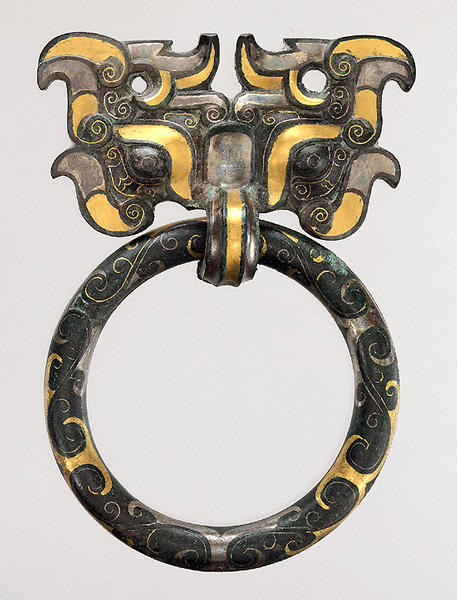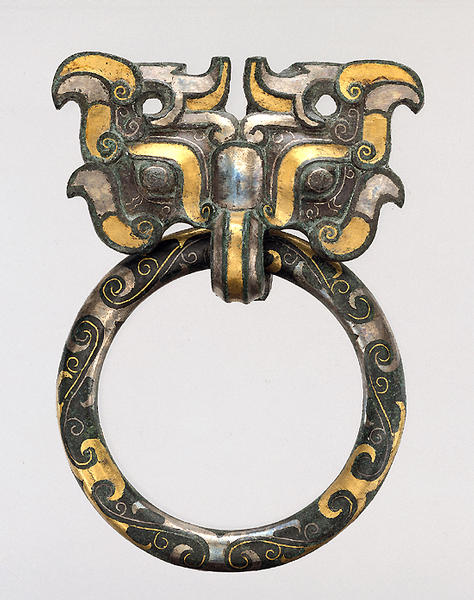獣面舗首
- 中国
- 中国・東周時代
- 前4世紀
- 青銅、金、銀
- H-13.7 D-9 W-9.6
この作品のように豪華に象嵌された青銅製の部品は、東周時代後期の贅沢な品々に用いられる装飾的な付属品を構成する重要な要素である。鋳造され、象嵌、鍍金などが施された青銅製の同様の獣面はしばしば、青銅製もしくは漆塗りの木製の容器の上にみられる。より大型のものは木製の棺の把手として用いられ、格別大きなものは恐らく墓の通路で入口の扉の把手の役割を果たしていたとみられる。
Catalogue Entry
Lavishly inlaid bronze fittings such as this pair of ringholder masks are important components in the decorative accessories used with luxury objects of the late Eastern Zhou period. Similar masks in cast, inlaid, or gilded bronze were often found on bronze or lacquered wooden vessels (cat. no. 104). Larger ones were used as handles on wooden coffins,1 and exceptionally large ones probably served as handles on entrance doors in tomb passageways.2 A pair of virtually identical ringholder masks in the Pierre Uldry collection suggests that the present masks may have formed part of a larger set.3
On these two masks and rings, gold and silver foil and thin wire-like strips are inlaid into cast and carved depressions on the bronze surface. The different colors of the two inlay materials appear in perfect balance against the dark reddish-brown patina of the bronze. On the masks, they highlight the studied rhythm of the hooked formations that form the eyelids, ears, jaws, and horns. On the rings, inlaid curls and volutes echo their circular shape. A fluted loop below each mask's silver-inlaid nose holds the freely movable ring. Pupils of the eyes are described by thin silver inlays. Two holes in the forehead may have allowed the insertion of pins to attach these masks to their backing.
JFS
1. Zhongguo kexueyuan 1956, pl. 45.
2. Watson 1973, no. 135; Lally 1994, no. 64.
3. Uldry 1994, no. 21.

